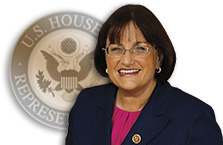The arrival of cold weather is a bitter pill to swallow for many families in the Monadnock Region who can’t afford to heat their homes.
It also has local officials so concerned that they’re advocating — whenever they get the chance — for funding to be restored and even increased for the federal fuel assistance program.
Funding to New Hampshire for the Low Income Home Energy Assistance Program, better known as LIHEAP, was cut by more than $1.6 million earlier this year as part of federal sequestration measures. That comes on top of state funding for the program that’s been shrinking every year since 2008.
The LIHEAP program provides individuals and families with help paying their heating bills during the winter months. This season, the program will run through April 30.
On Tuesday morning, amid subzero temperatures and the looming threat of snow, local officials spoke to U.S. Rep. Ann M. Kuster, D-N.H., at Southwestern Community Services in Keene about the importance of the program to the region.
They also stressed the need for federal funding to continue for home weatherization programs.
Funding for LIHEAP is small compared to the number of people the program serves, Beth L. Daniels told Kuster. Daniels is the director of Southwestern Community Services’ energy services and energy conservation program.
As of Tuesday, Southwestern Community Services had taken nearly 4,000 applications for fuel assistance from households in Cheshire and Sullivan counties, Daniels said.
The organization also has about 1,000 appointments scheduled with people seeking to sign up for the program, she said.
Those numbers are on par with this time last year, she said. By the time the program ends in April, she expects more than 6,000 applications will have been accepted from Cheshire and Sullivan counties, she said.
Of the people getting fuel assistance, the average amount they receive is $700, she said. That covers about 20 to 30 percent of the total cost to heat their homes or apartments for the winter, she said.
“We’re grateful for what we get, but 20 percent is low,” she said.
In addition, there are a couple thousand households across the state that should be on fuel assistance, but haven’t been eligible since 2008 because of the decrease in funding, she said. As a result of the cuts, the criteria for getting help was tightened.
Kuster asked where people on fuel assistance turn to cover the rest of their heating expenses.
Elizabeth Sayre, human services manager for the city of Keene, immediately said the city’s general assistance program.
Easily 85 percent of the people who apply for financial assistance from the city to help in paying for fuel and other necessities like food and clothing are the working poor, she said.
“They live paycheck to paycheck. Then it gets cold, and they come to the city for help,” she said. “Most people who come to welfare come with their heads down and not their hands out.”
If the fuel assistance program went away, the city would see the human services budget for fuel and electricity assistance increase tenfold, she said.
During the discussion Tuesday, Kuster said she remained committed to restoring funding to the program.
“I worry about anyone who isn’t in a safe place in this bitter cold,” she said.
Besides funding the fuel assistance program, it’s also important that the federal government continue to fund programs that support weatherizing homes, said John A. Manning, chief financial officer and acting chief executive officer of Southwestern Community Services.
In the long run, people who have their homes and apartments buttoned up against the cold spend less money on fuel, he said.
Kuster agreed, adding that weatherization programs are something she and other legislators in the cold-weather states can focus on.
In the meantime, a bipartisan budget passed by the U.S. House last week and currently in the Senate would help the country get past the sequester, and prevent the federal government from shutting down again, she said.
While the budget isn’t perfect, it’s a compromise that could lead to the restoration of some fuel assistance funding, she said.
